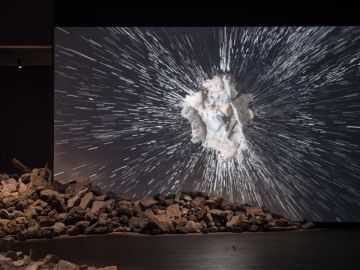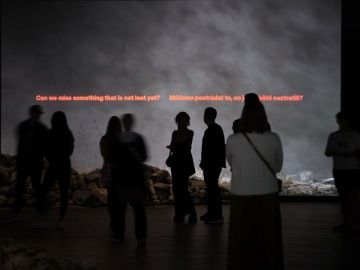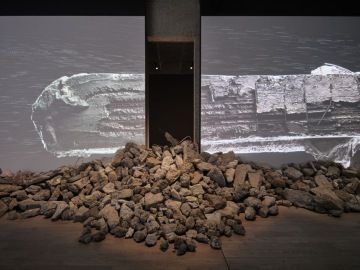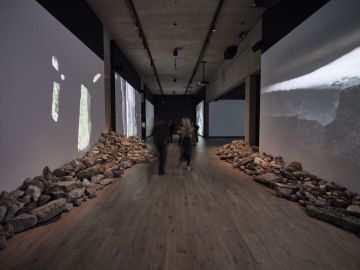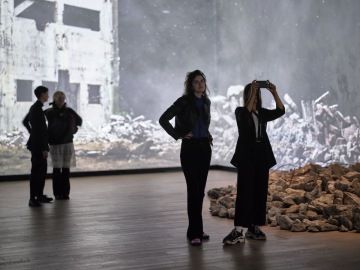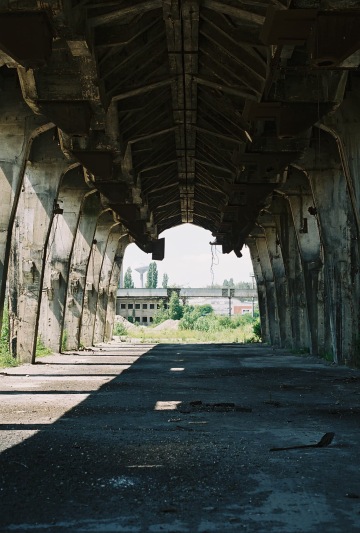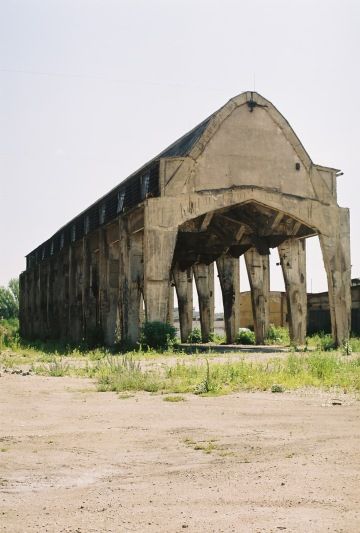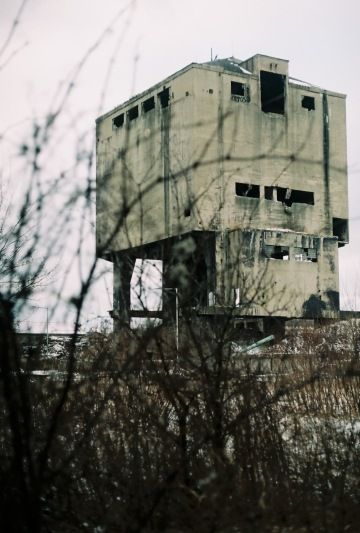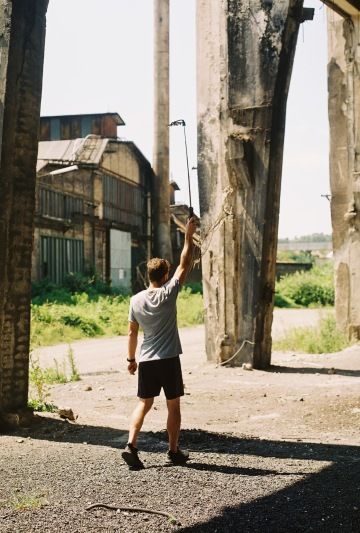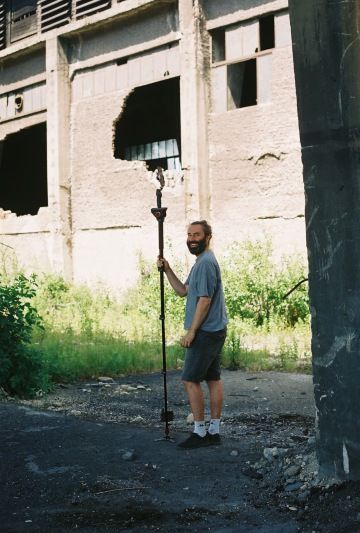Lunchmeat Studio explores the possibilities of immersive space
The exhibition The Grief of Misfit Cathedrals is one of the biggest immersive, multi-channel exhibitions presented in the Czech Republic. It debuted as part of Signal Festival 2023 and will be on show at Kunsthalle Praha until 14 January 2024.
The fifteen-minute-long immersive audiovisual artwork employs stunning multi-channel sound and detailed 3D scans of abandoned industrial objects found in the ruins of disused iron works plants in Kladno and the Prague district of Veleslavín. Visitors to Aw! Lab—Kunsthalle’s space for experimentation—can look forward to an impressive visual and sonic excursion to monumental yet hardly accessible places which are slowly but inadvertently vanishing.
“Aw! Lab is a free and safe space, kind of a laboratory, which allows us to experiment with new art forms and explore their potential in terms of exhibiting and carving out a space in the art world. That’s why I contacted Jakub Pešek and Lunchmeat Studio, which he is part of, as their projects tend to have a large overlap with fine art, as well as with contemporary music and audiovisual experiments. I wanted to collaborate with them and create a meaningful project that will make good use of Kunsthalle Praha’s gallery space and remain on show for a longer period of time,” explains exhibition curator Iva Polanecká, who characterizes the installation as a transcendental, musical-visual experience.
The Charm of Transience
Lunchmeat Studio is an independent artist collective focusing on new technologies in art. For the past fourteen years, they have also been organizing the acclaimed Lunchmeat Festival. Their work often uncovers and explores unique spaces that are overlooked by society but can still enchant us with their genius loci.
“The topic developed under our hands, and we gradually homed in on the essence of the individual spaces, their stories, and their past, current, and possible future relations with the society that surrounds them. We don’t want viewers to understand the exhibition as showing the ruins of post-industrial buildings. Instead, we would like them to really think about what they find beautiful, what deserves to be preserved, and to what extent it is necessary to renovate the remains of something that humans have already once created and that has subsequently, within a century, become a ruin of sorts,” elaborates Lunchmeat Studio artist Jakub Pešek, the director of the installation. His description spotlights a key element of the exhibition—the Japanese principle of mono no aware.
This concept promotes finding beauty in things that are not necessarily appealing—it suffices that they exist and confront people with the power of the present moment and the sadness of its transience.
© Vojtěch Veškrna
Industrial Documentation
“Our work is situated in a temporality that viewers might not fully understand. Rather than in a specific time, it unfolds in a sort of timelessness, in which we create an illusion that should inspire people to think about what they’ve just seen and why it speaks to them,” stresses Pešek, adding that the extensive 3D scanning of the selected buildings—these “pariahs of society”, as he calls them—was an experiment in itself. The scans were created via photogrammetry, a modern technology which uses photographs to collect data about physical objects and environments. Lunchmeat Studio spent several months rigorously mapping selected industrial buildings in Prague and Kladno. The final model, which viewers explore during screenings, is a synthesis of these dilapidating yet now also carefully documented—and thus preserved and archived—objects.
“Firstly, viewers find themselves surrounded by spatialized sound, in an immersive environment where everything unfolds around them, in their immediate vicinity. Secondly, this is a powerful contemporary artwork which draws on other artistic influences, be it the Romantic theme of abandoned ruins or the work of the Bernd and Hilla Becher, whose conceptual photography elevated objects to sculptures. In their own way, Lunchmeat are doing something similar with this installation,” describes Iva Polanecká, the curator of the exhibition.
She sees The Grief of Misfit Cathedrals as a complex artwork created by a group of unique audiovisual artists. The engulfing sensory experience is further bolstered by its thunderous sound design, conceived by innovative electronic music composer Ladislav Zensor, aka Oblaka.
© Nikola Schnitzerová

